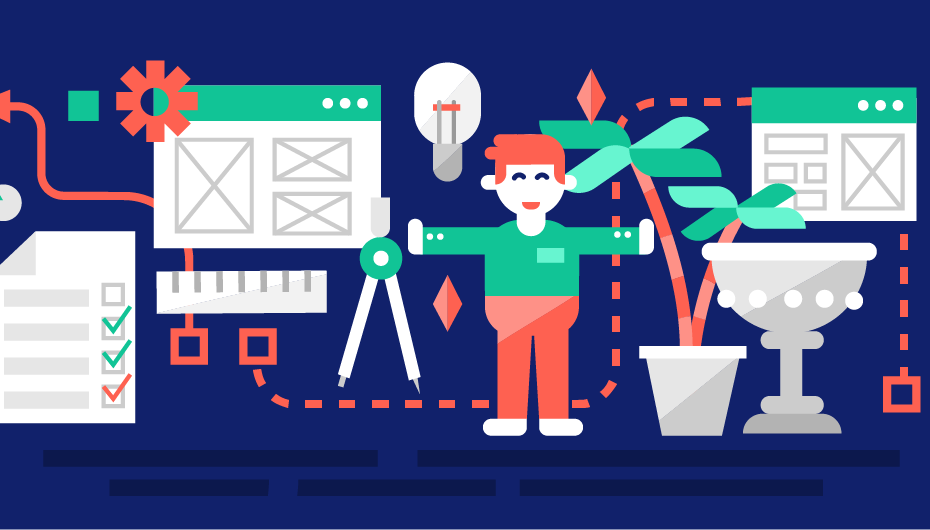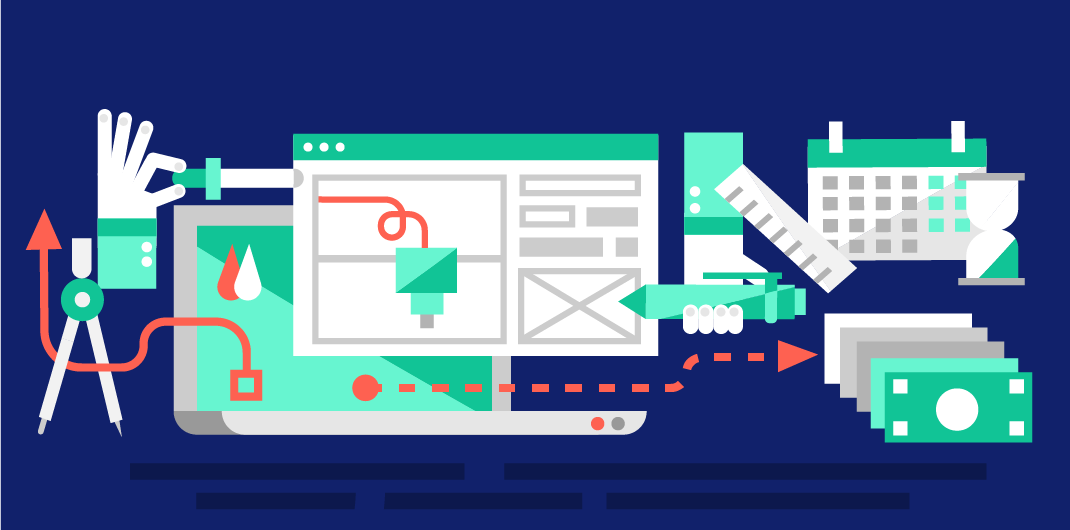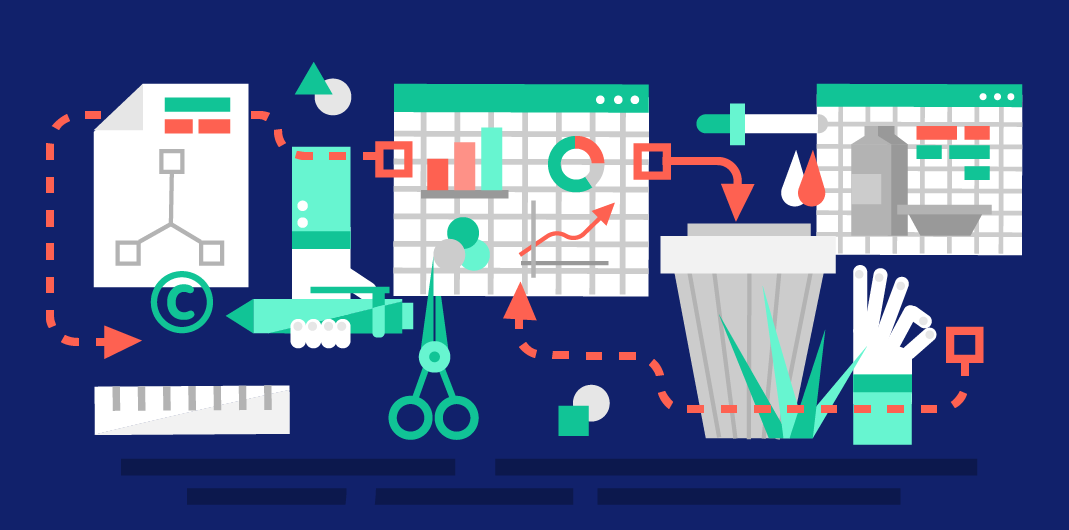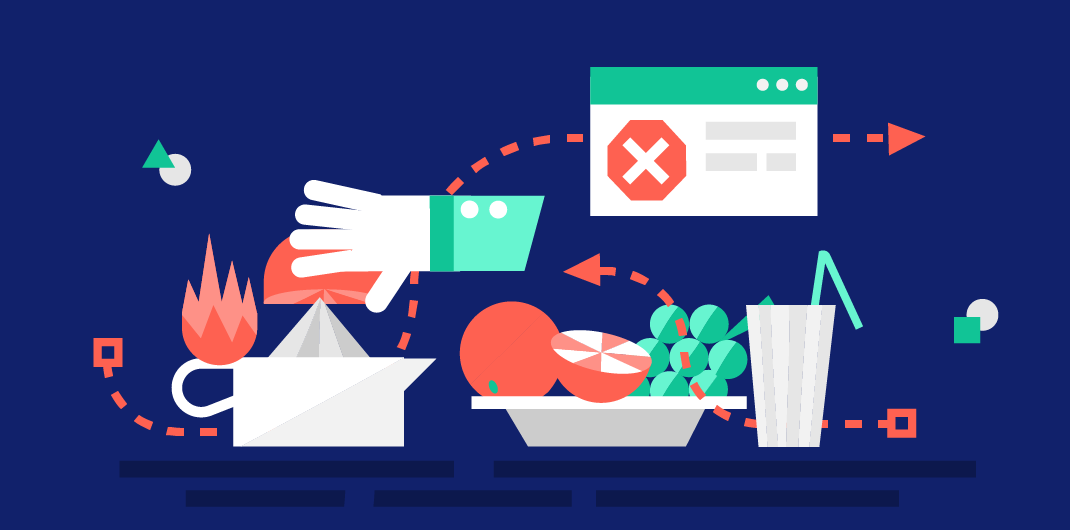Amidst the chaos that is startup life, it’s important to keep in mind who really matters: your customers. Powered by insight from the design firm IDEO, check out the 3-stage human-centered design framework. This iterative design process helps you iterate on your product with a singular focus on the real humans that will be your customers.
Humans at the Core of Design
Amidst the chaos that is startup life, it’s important to keep in mind who really matters: your customers. At the end of the day, your designs are for them. In a sense, you need to stop thinking like an engineer or a business owner, and start thinking like the human beings that your product will ultimately serve. A human-centered design approach helps you put the focus back on your customer. Why does that matter? Many hardware startups struggle with costly, often-avoidable prototype modifications. One way to improve prototyping is by designing based on customer requirements…from actual customers.
Human-centered design prompts you to ask questions that help you fully understand what your customer expects. How will my customers evaluate the product’s performance, durability, and quality? What features are must-have, nice-to-have, or not that important? How will the product be handled by the customer, and what should maintenance and repair look like? Answering these questions involves not only imagining what your customer would say, but actually hearing it from them directly. As this approach suggests, it’s all about putting humans at the very center of your design process.
Adopting the Right Mindset
Human-centered design involves more than just going through the motions. To be truly effective, this approach requires you to assume a certain mindset. No one knows this to be true more than IDEO, a renowned global design and innovation firm. In their Field Guide to Human-Centered Design, they lay out key elements that comprise the right mindset for design, according to seasoned company leaders.
First, stop thinking of failure as a “failure”. Rather, failure is a necessary part of human-centered design that allows you to listen, test, learn, and refine. It fuels iteration so you can validate your ideas along the way and ultimately make something better for your customers. Second, be optimistic and confident that you will eventually find a solution. Celebrate the art of the possible (even if it seems impossible), and don’t be afraid if you don’t know know the right answer. Ambiguity gives you the opportunity to innovate and explore lots of possible solutions. Third, be infinitely empathetic to your customers. The people that you’re designing for are the roadmap to your solution – immerse yourself in their world, walk in their shoes, and hear what they have to say. It takes time and effort to get to know your customers, but trust us when we say that it’s worth it.
Three Stages of Human-Centered Design
Although human-centered design is more iterative than linear, according to IDEO, there are three primary stages that you should incorporate into your design process: 1) Inspiration, 2) Ideation, and 3) Implementation. We’ve summarized core components of each stage below and provided links to additional information so you can dig deeper into the areas that make sense for your business.
Stage 1: Inspiration
In the first stage of design, your goal is to understand your customers on a more human level. Before you head out into the field, frame your design challenge. Clearly articulate the problem you’re trying to solve, without being too narrow or too broad. This is an important step, is it helps you define your scope, organize your thinking, and start out on the right foot. Then, create a project plan and build your team. Think through your timeline, key milestones, budget, and staffing. Build a cross-disciplinary team that combines technical know-how and industry expertise with new ideas and fresh perspectives. You may be surprised by how much an unexpected team member, like a graphic designer, has to contribute.
Before jumping into customer conversations, get context via secondary research. Reading up on the latest news, recent innovations, and existing solutions will help you get smart on your design challenge. Once you have a baseline, identify who you need to engage by using the right recruiting tools. Take into account age, gender, ethnicity, social position, occupation, location, and so on to ensure that you talk to the right people. Finally, you’re ready to conduct your interviews. IDEO recommends no more than three research members attend the interviews; anyone who attends should have a clear role. Come prepared with questions, starting broadly and then narrowing as you go deeper. Write down exactly what the person says – not what you think they mean. You can conduct group interviews, interviews with experts, or (more likely) a mixture of both.
Outside of interviews, there are other ways for you to get in touch with your customers, such as through immersion. This involves immersing yourself in the lives of your customers and shadowing them in their own environments. You can also try a method in which you enlist your customers to do some of the research themselves and document their own findings. Equip your customers with whatever resources they might need to do this and offer support throughout the observation and reporting process.
Stage 2: Ideation
Ideation involves making sense of what you’ve heard, generating ideas, identifying design opportunities, and testing out potential solutions. First, you’ll need to download your learnings as a group. Have team members sit in a circle and share their insights, recording them on post-it notes that are clustered on a large poster board or wall. Include inspiring stories from interviews or other research that seemed to “stick” with you throughout the first stage.
Now, you’re ready to synthesize your ideas. Start by writing down the top five themes that jump out to you. This helps you begin to prioritize, strategize, and uncover hidden insights. After your team has done this, identify emerging patterns. Are there themes that keep appearing? Next, you’re ready to create insight statements. These are succinct sentences that represent your key insights – ideally, you’d like to end up with three to five. For example, maybe a key insight is that customers say it’s painful and tiring to look at their monitors for extended periods of time. Translate the insight statement into an opportunity for design by asking, “How might we…design a computer screen that is easier on people’s eyes?”
Based on your design opportunities, brainstorm possible solutions – generate as many ideas as possible. To make sense of your data, it can be helpful to create frameworks to visually represent the information, highlight relationships, and guide your strategy. A framework could be anything from a 2×2 matrix to a journey map. Bundle similar ideas into groups to identify emerging themes that will ultimately inform your design principles. Articulated in a short and memorable way, these are the guardrails that represent the key aspects of your solution. Your design principles feed into your product concept, a more fully-fledged solution that you can test out with customers in a co-creation session. Feedback on your concept will help you determine what to prototype in order to answer your most burning questions and inform your next iteration. Try storyboarding, role-playing, rapid-prototyping, or business model canvasing to view prototyping in a new light. Get feedback throughout and iterate, iterate, iterate.
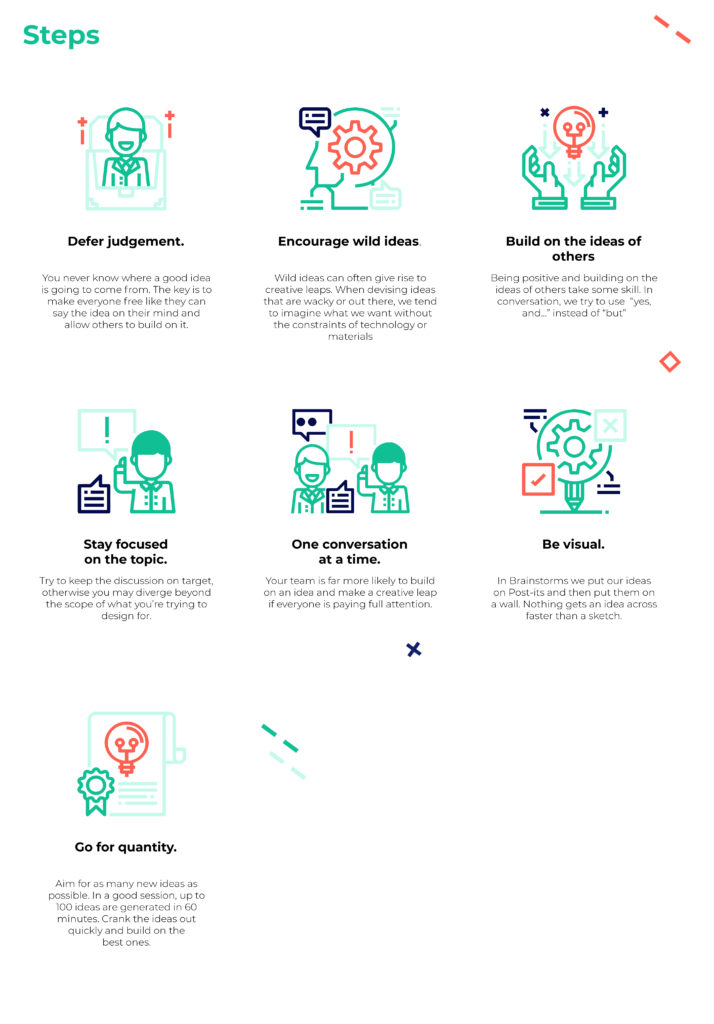
Stage 3: Implementation
This stage is where the rubber meets the road and you finally bring your product to market. Some startups find it helpful to begin with live prototyping, or running their solution for a couple weeks in the real world. That way, they can test out a particular part of their product (i.e. distribution, functionality, etc.). Some startups have the resources to conduct a longer-term pilot that allows them to collect critical feedback and key business metrics. Other companies will go straight to building a roadmap, or a plan of action to get their product launched. As part of this timeline, identify the key milestones and then break each down into sizeable chunks with action items and owners. Conduct a resource assessment to determine if you have the capabilities you need to realistically execute your plan.
You need a funding strategy to ensure that you have access to the money you need to get your business off the ground – keep in mind that your approach should differ at each stage of development. Think through when you’ll need to break even and how you’ll bridge your initial strategy to something more long-term. Most startups find that they need to build partnerships to access the capital and resources necessary to get their product to market. In any case, define what success looks like (financially, operationally, and from a customer perspective) – whether it’s in two months, one year, or five years down the line. If you do have partners, factor in how they define success and how they’ll hold you accountable. Create a pitch to communicate your product to funders, partners, consumers, and the marketplace. Explain how it works, why it matters, and who stands to benefit from it. Finally, monitor how you’re doing so you can evaluate your total impact over time.
Making It Work for You
While IDEO’s end-to-end human-centered design process may seem like a big undertaking, don’t be intimidated. If you’re a small company just getting going, use this approach as a starting point and modify it based on your resources. Maybe you can’t spend three months in the Inspiration stage, but you can conduct a few interviews with customer groups and industry experts. Start there! The good news is that you can implement many of these strategies for free – it just takes time, effort, and a team dedicated to assuming a true human-centered design mindset.
Want to learn more about how you can improve your prototyping efforts? Join our community of hardware entrepreneurs and we’ll send best practices and new innovations straight to your inbox.
